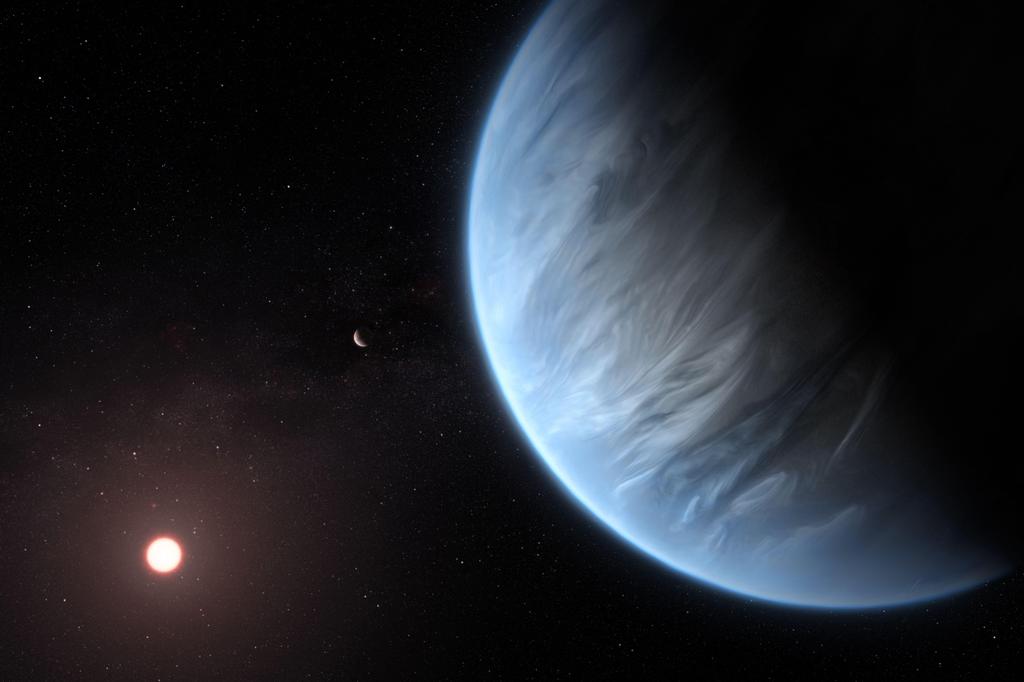K2-18b: Webb Telescope Finds Potential Life Signs – A New Chapter in Exoplanet Research
The James Webb Space Telescope (JWST) has delivered groundbreaking data on K2-18b, an exoplanet orbiting a red dwarf star 120 light-years away. While not definitive proof of life, the findings hint at the presence of molecules associated with living organisms, sparking intense excitement within the scientific community and igniting public interest in the search for extraterrestrial life. This discovery marks a significant leap forward in exoplanet research and opens up a thrilling new chapter in our understanding of the universe.
JWST's Groundbreaking Observations
The JWST, with its unparalleled infrared sensitivity, has analyzed the atmosphere of K2-18b, detecting the presence of several key molecules. While previous observations suggested the presence of water vapor, the JWST's data reveals a more complex atmospheric composition, including potential traces of:
- Dimethylsulfide (DMS): This molecule is primarily produced by phytoplankton in Earth's oceans. Its detection on K2-18b could indicate the presence of similar biological processes. This is arguably the most exciting finding, prompting further investigation.
- Methane (CH4): While methane can be produced through geological processes, its presence alongside potential DMS significantly increases the probability of biological origins.
- Carbon Dioxide (CO2): The presence of CO2 further supports the potential for a complex atmosphere, although it's not uniquely indicative of life.
What makes this discovery so significant?
This isn't the first time scientists have hinted at the potential for life on an exoplanet. However, the combination of factors makes the K2-18b findings particularly compelling:
- JWST's advanced capabilities: The unprecedented sensitivity of the JWST allows for far more detailed analysis of exoplanet atmospheres than ever before.
- The presence of multiple biosignatures: The detection of both DMS and methane significantly increases the plausibility of biological activity compared to the presence of a single potential biosignature.
- Liquid water potential: Previous research suggested the presence of liquid water on K2-18b, a crucial ingredient for life as we know it.
Cautious Optimism and Future Research
It's crucial to emphasize that these findings are not definitive proof of extraterrestrial life. More research is necessary to confirm these initial observations and rule out other possible explanations for the detected molecules. The scientific community is currently working on:
- Further atmospheric analysis: More detailed spectroscopic analysis is needed to refine the measurements and better understand the atmospheric composition.
- Modeling K2-18b's environment: Sophisticated climate models will be crucial in determining if the detected molecules are consistent with biological activity or alternative geological processes.
- Searching for other biosignatures: The search for additional biosignatures will provide further evidence supporting or refuting the possibility of life on K2-18b.
The Implications for the Search for Extraterrestrial Life
The potential discovery of life on K2-18b, even if ultimately unconfirmed, has profound implications for the search for extraterrestrial life. It demonstrates the incredible potential of the JWST and highlights the possibility that life may be far more common in the universe than previously thought. This discovery underscores the importance of continued investment in space exploration and exoplanet research, driving us closer to answering one of humanity's most fundamental questions: Are we alone?
This is a developing story, and we will continue to update this article as more information becomes available. Stay tuned for further updates on this groundbreaking discovery! What are your thoughts on this exciting new development? Share your comments below!
